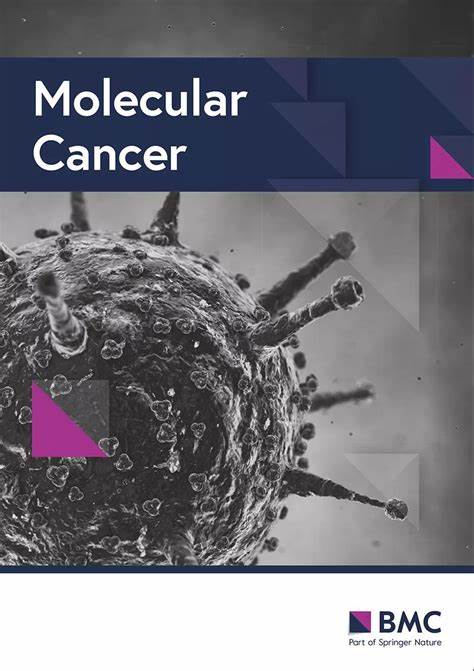From morphology to single-cell molecules: high-resolution 3D histology in biomedicine
IF 27.7
1区 医学
Q1 BIOCHEMISTRY & MOLECULAR BIOLOGY
引用次数: 0
Abstract
High-resolution three-dimensional (3D) tissue analysis has emerged as a transformative innovation in the life sciences, providing detailed insights into the spatial organization and molecular composition of biological tissues. This review begins by tracing the historical milestones that have shaped the development of high-resolution 3D histology, highlighting key breakthroughs that have facilitated the advancement of current technologies. We then systematically categorize the various families of high-resolution 3D histology techniques, discussing their core principles, capabilities, and inherent limitations. These 3D histology techniques include microscopy imaging, tomographic approaches, single-cell and spatial omics, computational methods and 3D tissue reconstruction (e.g. 3D cultures and spheroids). Additionally, we explore a wide range of applications for single-cell 3D histology, demonstrating how single-cell and spatial technologies are being utilized in the fields such as oncology, cardiology, neuroscience, immunology, developmental biology and regenerative medicine. Despite the remarkable progress made in recent years, the field still faces significant challenges, including high barriers to entry, issues with data robustness, ambiguous best practices for experimental design, and a lack of standardization across methodologies. This review offers a thorough analysis of these challenges and presents recommendations to surmount them, with the overarching goal of nurturing ongoing innovation and broader integration of cellular 3D tissue analysis in both biology research and clinical practice.从形态学到单细胞分子:生物医学中的高分辨率3D组织学
高分辨率三维(3D)组织分析已经成为生命科学领域的一项革命性创新,为生物组织的空间组织和分子组成提供了详细的见解。本文首先回顾了影响高分辨率3D组织学发展的历史里程碑,重点介绍了促进当前技术进步的关键突破。然后,我们系统地对各种高分辨率3D组织学技术进行分类,讨论其核心原理,能力和固有局限性。这些3D组织学技术包括显微镜成像、层析成像方法、单细胞组学和空间组学、计算方法和3D组织重建(例如3D培养和球体)。此外,我们还探索了单细胞3D组织学的广泛应用,展示了单细胞和空间技术如何在肿瘤学、心脏病学、神经科学、免疫学、发育生物学和再生医学等领域得到利用。尽管近年来取得了显著的进展,但该领域仍然面临着重大挑战,包括进入门槛高、数据鲁棒性问题、实验设计的最佳实践模糊以及方法缺乏标准化。这篇综述对这些挑战进行了全面的分析,并提出了克服这些挑战的建议,其总体目标是在生物学研究和临床实践中培育持续的创新和更广泛的细胞3D组织分析整合。
本文章由计算机程序翻译,如有差异,请以英文原文为准。
求助全文
约1分钟内获得全文
求助全文
来源期刊

Molecular Cancer
医学-生化与分子生物学
CiteScore
54.90
自引率
2.70%
发文量
224
审稿时长
2 months
期刊介绍:
Molecular Cancer is a platform that encourages the exchange of ideas and discoveries in the field of cancer research, particularly focusing on the molecular aspects. Our goal is to facilitate discussions and provide insights into various areas of cancer and related biomedical science. We welcome articles from basic, translational, and clinical research that contribute to the advancement of understanding, prevention, diagnosis, and treatment of cancer.
The scope of topics covered in Molecular Cancer is diverse and inclusive. These include, but are not limited to, cell and tumor biology, angiogenesis, utilizing animal models, understanding metastasis, exploring cancer antigens and the immune response, investigating cellular signaling and molecular biology, examining epidemiology, genetic and molecular profiling of cancer, identifying molecular targets, studying cancer stem cells, exploring DNA damage and repair mechanisms, analyzing cell cycle regulation, investigating apoptosis, exploring molecular virology, and evaluating vaccine and antibody-based cancer therapies.
Molecular Cancer serves as an important platform for sharing exciting discoveries in cancer-related research. It offers an unparalleled opportunity to communicate information to both specialists and the general public. The online presence of Molecular Cancer enables immediate publication of accepted articles and facilitates the presentation of large datasets and supplementary information. This ensures that new research is efficiently and rapidly disseminated to the scientific community.
 求助内容:
求助内容: 应助结果提醒方式:
应助结果提醒方式:


